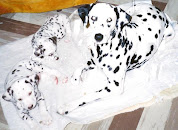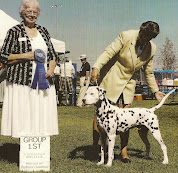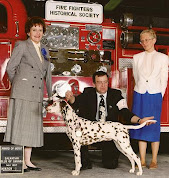http://www.caninesports.com/uploads/1/5/3/1/15319800/vizsla_javma_study.pdf
This is the newest attempt at trying to understand possible associations of spay/neuter and some health issues and other issues. Associations are not cause and affect. Statistical associations also are not physiological associations. Two thing can easily show some association when only two parameters are applied but fail to be of any significance when parameters such as common ancestry, environmental influences, etc. are applied.
To me there are several points to note.
The first is that the authors pointed out at least some of the shortcomings of the survey used for the analysis (page 316 in particular). For me there are/were some glaring shortcomings in the survey -
This will not change my requirements that most of my pups be spayed/neutered. For many reasons, some of which are the following:
1. Association does not mean cause and affect relationship. Also many such associations gleamed from ‘personal’ reporting such as the survey that formed the bases for this analysis in the end prove to be non associations when other parameters are applied..such as common ancestry of dogs who have cancer or environmental influences.
2. In the original survey, due to previous discussions, I feel many people who responded already had the idea that there was a causal relationship between spay/neuter and health issues. Breeder respondents were not required to enter data on all dogs in a litter or any other mechanism that might help to ensure that the data collected represented some percentage of dogs they have bred. It is easy to say that if I had two spay/neutered dogs who got some sort of cancer and only one intact dog that got some sort of cancer, the data would reflect a higher incidence in the spay/neutered dogs..but not if most of the dogs I had produced/owned were spayed/neutered as compared to those intact.
3. If you extrapolate from their data, the best time to spay/neuter either a female or male dog to decrease the chance of the cancers they looked at in the spay/neuter group would be 7-12 months – interesting.
4. It seems from my experience that breeders and owners often have little idea of what actually caused their dog’s death or what cancer their dog had. Cancer often seems to be grouped in their minds as one thing, where even a benign tumor is cancer. Also when you ask many people about the cancer their dogs had, there was no necropsy done on the dog nor histo-pathology to make the actual diagnoses. This to me makes owner/breeder surveys suspect.
I hope that is looked into further because out it all, what I would want to know is when is the best time to spay/neuter for the chances for the best overall cancer and other health outcomes. I think it will always be a risk management choice of both health and population control issues.
What we need in my opinion, is more patho-physiology research and less survey data into these issues; less stabbing in the dark looking at two or three parameters and then assigning importance to associations between them when often it seems more red herrings than real answers are being seen.
Just my opinion.
It is also interesting to note that even in the survey they used as
the bases of their analysis, they found 'there is no difference in
the life span of gonadectomized versus sexually intact dogs'
(page 351).
Friday, January 24, 2014
Another paper on the possible associations of spay/neuter and health in Vs
Posted by Vizsla at 10:34 AM
Labels: 2014, spay neuter paper
Subscribe to:
Post Comments (Atom)












0 Comments:
Post a Comment